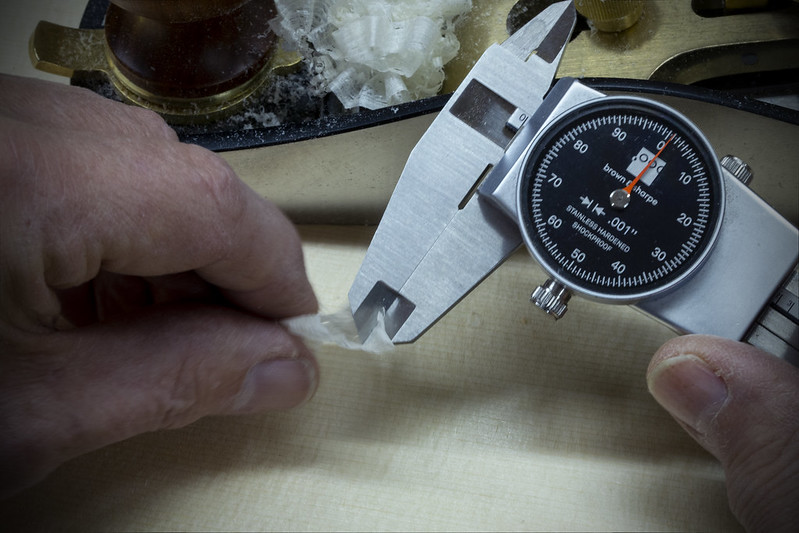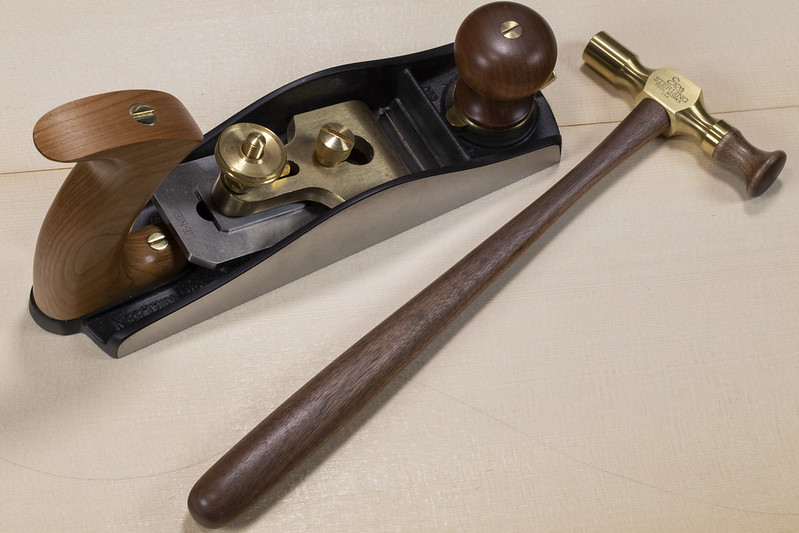Quote:
Originally Posted by JMURRAY16

.
Would love to hear the “most valuable” hand tools list for an acoustic build in your opinion as well.
|
This is well timed! There are many valuable hand tools many of which are hand planes. Planes come in four basic families that I use building guitars; Bench plane, Block planes, Finger planes and Specialty planes.
At this time there is one super star I'd like to talk about from the bench plane family, the smoothing plane. This tool does things that no power tool can do.
It is a finishing tool which when properly set up and used truly optimizes the look and functionality of a wood surface:

Here is a close picture of the Swiss alpine Spruce soundboard I am using on this guitar. The surface has been sanded as it normally would be for gluing or finishing:

Here is the same top ready for finish using the smoothing plane:

The planed surface is much shinier and the grain shows much better with more depth and chatoyance. That's because the surface has not been shredded by the abrasive action of sandpaper and the porous surface has not become all jammed up with sawdust.
You get better glue and finish adhesion to a planed surface. Important things like the braces, sides and bridge are going to stick better and hold longer. The wood will even look better while doing it!
Now lets talk about accuracy. One thing I needed to upgrade was my micrometer. With a high resolution micrometer I can gauge the depth of the plane's cut by measuring the thickness of the fine ribbons of wood being shaved:

I'm pulling just under .001" in this photo. You can almost see through that. The mouth of the plane is adjustable in front of the cutting edge to control the consistency of the cut.
To insure the plane's blade is not leaving edge grooves when doing a large surface I use this plane hammer:

The way it works is I take a a shaving on a piece of test wood and the use the micrometer to measure the two edges of the ribbon. I use the hammer to just tap the back sides of the plane blade until the ribbon edges exactly match. The hammer head is brass so it doesn't mar the sides of the blade. The right hammer makes this set up easy.

No sawdust, no dust mask, no dust collector, no ear protection, no noise just the sound of the wood doing my bidding!